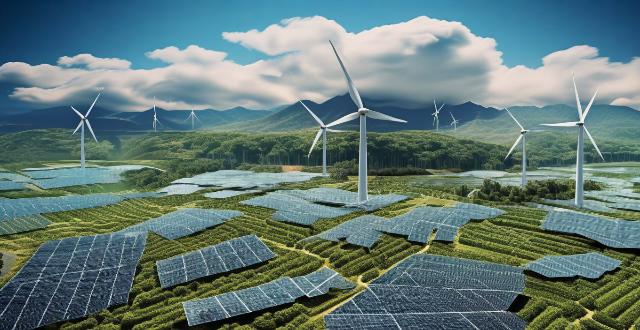Investing in clean energy is becoming increasingly popular due to rising awareness of the need for sustainability. Successful investments include solar power, wind power, geothermal energy, hydroelectric power, bioenergy, electric vehicles, energy efficiency measures, and smart grid technology. These investments not only combat climate change but also create new economic opportunities and jobs.

Successful Clean Energy Investments
Clean energy investments have been on the rise in recent years as the world becomes more aware of the need to reduce carbon emissions and transition to a sustainable future. Here are some examples of successful clean energy investments:
1. Solar Power
- Residential Solar Panels: Installing solar panels on residential rooftops has become increasingly popular, allowing homeowners to generate their own electricity and reduce their reliance on fossil fuels.
- Solar Farms: Large-scale solar farms have been developed around the world, providing a significant source of renewable energy that can be fed into the grid.
- Solar Water Heaters: These devices use solar energy to heat water for domestic use, reducing the need for conventional water heaters that consume non-renewable resources.
2. Wind Power
- Onshore Wind Turbines: Wind turbines installed on land continue to be a major source of clean energy, with many countries investing heavily in this technology.
- Offshore Wind Farms: Offshore wind farms, located in coastal waters, have the potential to produce even more energy than their onshore counterparts due to stronger and more consistent winds.
- Distributed Wind Energy: Smaller wind turbines installed in urban areas or on individual properties can also contribute to a cleaner energy mix.
3. Geothermal Energy
- Geothermal Heating and Cooling Systems: These systems use the constant temperature of the earth to heat buildings in winter and cool them in summer, reducing the need for traditional HVAC systems.
- Geothermal Power Plants: Large-scale geothermal power plants tap into the earth's internal heat to generate electricity without emitting greenhouse gases.
4. Hydroelectric Power
- Large-Scale Hydroelectric Dams: While controversial due to environmental impacts, large hydroelectric dams can produce vast amounts of clean energy when designed and operated responsibly.
- Run-of-River Hydroelectricity: This approach involves using the natural flow of rivers to generate electricity without constructing large dams, minimizing environmental disruption.
5. Bioenergy
- Biomass Power Plants: By burning organic materials such as wood chips or agricultural waste, these facilities produce electricity while capturing carbon dioxide emissions during growth of the biomass.
- Anaerobic Digestion: This process turns organic waste into biogas, which can be used for heating or electricity generation, while producing nutrient-rich fertilizer as a byproduct.
6. Electric Vehicles (EVs)
- Charging Infrastructure: Investing in widespread charging networks supports the adoption of electric vehicles, reducing dependence on fossil fuels for transportation.
- EV Manufacturing: Companies that specialize in producing electric vehicles are seeing increased demand as consumers seek eco-friendly options for getting around.
7. Energy Efficiency Measures
- Building Insulation: Improving the energy efficiency of buildings through better insulation reduces heating and cooling needs, leading to lower energy consumption overall.
- Energy-Efficient Appliances: Upgrading to appliances with higher energy efficiency ratings can significantly cut down on household energy usage and costs.
8. Smart Grid Technology
- Demand Response Systems: These systems help manage electricity demand by adjusting usage patterns during peak times, reducing strain on the grid and minimizing the need for additional power sources.
- Distributed Energy Resources (DERs): Technologies like rooftop solar panels and small wind turbines can feed excess energy back into the grid, creating a more decentralized and efficient system.
Conclusion
Investing in clean energy not only helps combat climate change but also creates new economic opportunities and jobs. As technology continues to advance and costs come down, we can expect even more successful investments in this sector in the coming years.